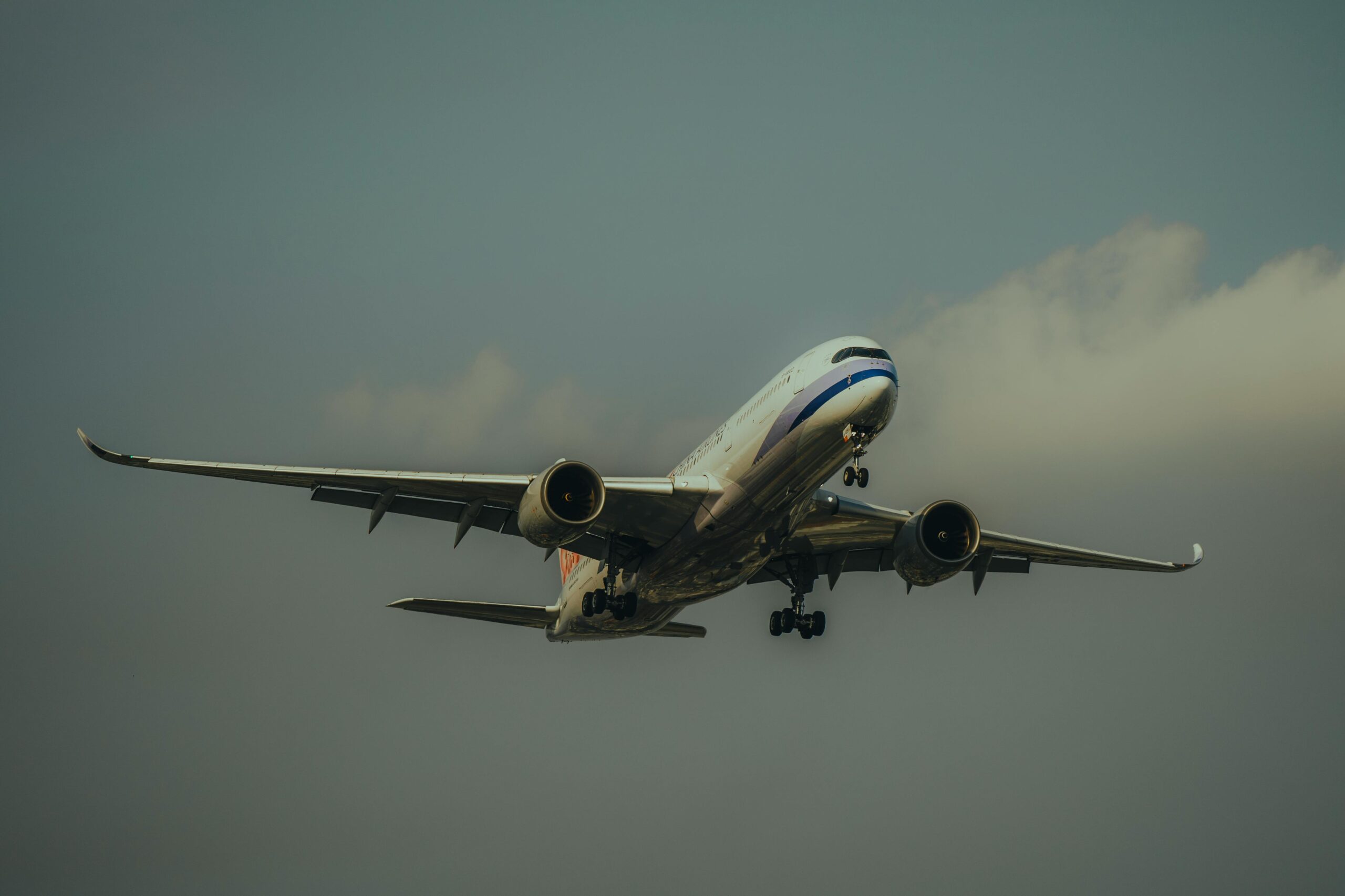Navigating the Complex World of Aviation Parts

Navigating the Complex World of Aviation Parts
The Essential Aviation Parts Every Aircraft Needs
Navigating the complex world of aviation requires a deep understanding of the critical parts that make an aircraft functional and safe. Among the most essential aviation parts are the engines, landing gear, and avionics systems, each playing a crucial role in the overall performance and safety of the aircraft.
1. Engines: The engines are the heart of any aircraft, providing the necessary thrust to propel the plane through the air. Whether it’s a jet engine or a turboprop, the engine’s efficiency and reliability are paramount for successful flight operations. These powerful machines are made up of thousands of components working in harmony, including turbines, compressors, and fuel systems. Ensuring that each of these parts is in optimal condition is vital, as engine failure can have catastrophic consequences.
2. Landing Gear: The landing gear system is another critical component that ensures safe takeoffs and landings. This system includes the wheels, struts, brakes, and hydraulic components that allow the aircraft to land smoothly and absorb the impact of touching down. The landing gear must be robust enough to handle the stresses of repeated use, especially during challenging conditions such as rough landings or high-speed touchdowns. Regular inspection and maintenance of the landing gear are essential to prevent failures that could lead to accidents.
3. Avionics Systems: Avionics refers to the electronic systems used in aircraft, including navigation, communication, and monitoring systems. These systems are vital for guiding the aircraft, maintaining communication with air traffic control, and ensuring that all flight parameters are within safe limits. Modern avionics systems include sophisticated displays, autopilot systems, and onboard computers that assist pilots in making informed decisions throughout the flight. The reliability and accuracy of these systems are crucial for ensuring safe and efficient operations, especially in complex airspace or during adverse weather conditions.
4. Structural Components: Beyond engines, landing gear, and avionics, an aircraft’s structural components, such as the wings, fuselage, and control surfaces, are essential for maintaining the aircraft’s integrity and aerodynamic performance. These parts must be designed and maintained to withstand the various forces encountered during flight, including lift, drag, and turbulence. Regular inspections and adherence to strict maintenance schedules are necessary to detect and address any signs of wear or damage, ensuring the aircraft remains airworthy.
In summary, understanding and maintaining these essential aviation parts is crucial for the safe and efficient operation of any aircraft. Each component plays a vital role, and neglecting any part can lead to significant risks, making comprehensive maintenance and regular inspections imperative in the aviation industry.
The Role of Avionics in Modern Aircraft
Avionics systems are at the forefront of modern aviation, serving as the technological backbone that supports safer and more efficient flights. These systems encompass a wide range of electronic devices and applications that facilitate navigation, communication, monitoring, and control of the aircraft.
1. Navigation Systems: One of the primary roles of avionics is to provide accurate and reliable navigation for the aircraft. Modern navigation systems use a combination of GPS, inertial navigation systems (INS), and radio navigation aids to determine the aircraft’s position and guide it along the planned route. These systems are integral to flight safety, as they enable precise route planning, automatic waypoint tracking, and real-time updates on the aircraft’s location. In complex airspace or during low-visibility conditions, advanced navigation systems are indispensable for avoiding obstacles and ensuring the aircraft stays on course.
2. Communication Systems: Communication between the aircraft and ground control, as well as between crew members, is facilitated by advanced avionics. These systems include radios, transponders, and satellite communication devices that allow for clear and reliable communication over long distances. Effective communication is critical for maintaining situational awareness, receiving instructions from air traffic control, and coordinating with other aircraft. In emergencies, the ability to communicate quickly and clearly can be the difference between a controlled resolution and a disaster.
3. Monitoring and Control Systems: Avionics systems also include various monitoring and control devices that help pilots manage the aircraft’s performance. These systems display critical information such as engine status, fuel levels, and environmental conditions. Advanced avionics can even automate certain aspects of flight, such as maintaining altitude or heading, through autopilot systems. By reducing the pilot’s workload and providing real-time data, these systems enhance the overall efficiency and safety of the flight.
4. Safety Enhancements: Modern avionics contribute significantly to the safety of flights through systems such as Terrain Awareness and Warning Systems (TAWS), Traffic Collision Avoidance Systems (TCAS), and weather radar. These systems provide warnings and alerts to pilots about potential hazards, such as terrain obstructions, nearby aircraft, or severe weather conditions. By providing early warnings, these avionics systems enable pilots to take proactive measures to avoid accidents, enhancing the overall safety of the flight.
In conclusion, avionics systems are the nerve center of modern aircraft, providing essential tools and information that enhance safety, efficiency, and operational effectiveness. As technology continues to evolve, avionics systems are becoming increasingly sophisticated, offering greater capabilities and contributing to the ongoing advancements in aviation safety and performance.
Maintenance Best Practices for Aircraft Parts
Effective maintenance of aircraft parts is essential for ensuring consistent performance, extending the lifespan of the aircraft, and maintaining safety standards. Adopting best practices in maintenance can prevent costly repairs, avoid unexpected downtime, and ensure that aircraft remain in top condition.
1. Adherence to Maintenance Schedules: One of the most important aspects of maintaining aircraft parts is adhering to the prescribed maintenance schedules. Aircraft manufacturers and regulatory bodies like the FAA provide detailed maintenance programs that outline when inspections, repairs, and replacements should occur. These schedules are based on factors such as flight hours, cycles, and calendar time. Regular maintenance checks are crucial for detecting wear and tear, addressing potential issues before they escalate, and ensuring that all parts are functioning correctly.
2. Use of Approved Parts and Materials: When replacing or repairing aircraft parts, it is vital to use only approved parts and materials. Using Original Equipment Manufacturer (OEM) parts or those certified by aviation authorities ensures that the components meet the required safety and performance standards. Substandard or counterfeit parts can lead to failures and pose serious safety risks. Additionally, using the correct lubricants, sealants, and adhesives that are compatible with aircraft systems is essential for maintaining the integrity of the parts.
3. Detailed Record-Keeping: Maintaining detailed records of all maintenance activities is a best practice that serves multiple purposes. Accurate records provide a history of the aircraft’s maintenance, which is essential for tracking the performance of parts, scheduling future maintenance, and ensuring compliance with regulatory requirements. In the event of an incident, comprehensive maintenance records can help investigators determine the root cause and prevent future occurrences.
4. Regular Inspections and Testing: Conducting regular inspections and testing of aircraft parts is a proactive approach to maintenance. Inspections should include both visual checks and more in-depth examinations using non-destructive testing (NDT) methods, such as ultrasonic, radiographic, or magnetic particle inspections. These methods can detect hidden flaws, such as cracks or corrosion, that are not visible to the naked eye. Regular testing of critical systems, such as avionics and engines, ensures that they are operating within the specified parameters and helps identify any deviations that could indicate potential problems.
5. Continuous Training for Maintenance Personnel: Ensuring that maintenance personnel are well-trained and up-to-date with the latest techniques and regulations is crucial for effective maintenance practices. Continuous training programs help technicians stay informed about new technologies, changes in regulations, and best practices in aircraft maintenance. Skilled and knowledgeable technicians are better equipped to identify issues, perform accurate repairs, and maintain the overall safety of the aircraft.
By following these maintenance best practices, aircraft operators can ensure that their fleets remain airworthy, safe, and reliable. Regular maintenance, the use of approved parts, thorough record-keeping, and continuous training are all critical components of a comprehensive maintenance strategy that enhances the longevity and performance of aircraft parts.
Finding Trusted Suppliers for Aviation Parts
Selecting reliable suppliers for aviation parts is a critical aspect of maintaining aircraft safety, compliance, and operational efficiency. The aviation industry demands high standards for parts quality, making it essential to source components from trusted suppliers.
1. Importance of Supplier Certification: One of the first steps in finding a trusted supplier is to ensure they are certified by relevant aviation authorities. Certifications from organizations like the FAA, EASA, or other national aviation authorities indicate that the supplier adheres to stringent quality and safety standards. Certified suppliers are more likely to provide parts that meet regulatory requirements and have undergone rigorous testing. This is particularly important for critical components such as engines, avionics, and structural parts, where the margin for error is minimal.
2. Reputation and Track Record: A supplier’s reputation and track record in the aviation industry are strong indicators of their reliability. Established suppliers with a history of providing high-quality parts to major airlines and aircraft manufacturers are generally more trustworthy. Customer reviews, industry awards, and testimonials can provide insights into a supplier’s reputation. Additionally, working with suppliers who have a proven track record in the industry reduces the risk of receiving substandard or counterfeit parts.
3. Inventory and Availability: The availability of parts is another crucial factor when choosing a supplier. Reliable suppliers maintain a robust inventory of parts to meet the demands of their customers promptly. This is especially important for time-sensitive repairs or maintenance activities where aircraft downtime must be minimized. Suppliers who can quickly deliver parts help ensure that aircraft return to service as soon as possible, reducing the operational impact of maintenance activities.
4. Quality Assurance Processes: Understanding a supplier’s quality assurance processes is essential for ensuring the integrity of the parts they provide. Trusted suppliers implement comprehensive quality control measures, including rigorous testing, inspection, and certification of all parts before they are shipped. These processes help ensure that each component meets the required specifications and performs as expected. Additionally, suppliers who provide traceability information, such as batch numbers and manufacturing records, offer an added layer of assurance regarding the authenticity and quality of the parts.
5. Customer Support and After-Sales Service: The level of customer support and after-sales service provided by a supplier is also an important consideration. Reliable suppliers offer excellent customer service, including technical support, warranty options, and assistance with regulatory compliance. A supplier that stands behind their products and provides ongoing support can be a valuable partner in maintaining the safety and performance of an aircraft fleet.
In summary, finding trusted suppliers for aviation parts involves thorough research and consideration of several factors, including certification, reputation, inventory, quality assurance, and customer support. By choosing reliable suppliers, aircraft operators can ensure they receive high-quality parts that meet industry standards, thereby maintaining the safety, compliance, and efficiency of their operations.
